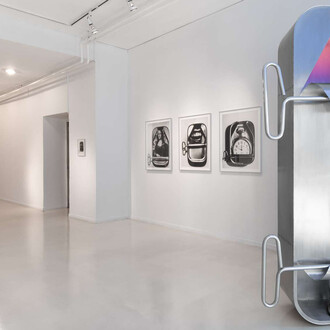When we stand before a painting, sculpture or print we surrender ourselves to their expressive address and enter into a silent dialogue with their creators. We re-experience their feelings, we read mental backgrounds, or we try to find out how a certain work of art was coming into existence. The exhibits assembled in the Permanent Collection of the National Gallery of Slovenia are a rich source of creative inspiration. For this reason, in addition to guided tours and lectures for visitors, we have been organizing various creative courses for a number of years. The courses are meant to invite visitors to make drawings and sculptures in front of the exhibits in the collection or to test their abilities in printmaking. The present exhibition shows the works of participants to four courses that were held in the National Gallery from September to December 2018.
Sixteen draughtsmen and women studied in detail landscapes, still-lifes and portraits mounted in the Permanent Collection. They drew in front of the works of our masters, sometimes choosing a detail and at other times capturing the whole. The students mainly used pencil and graphite. In the Creative Studio, they worked from templates and life models. While depicting objects, they became more skilled in shading and modelling. They continued by learning about picture space, the laws of perspective and about organic shapes of still lifes. Their final endeavour was portraiture, where they also drew from life. The students used drawing to develop continuously their own artistic interpretation.
Twenty participants spent their Wednesday evenings by the Ljubljanica River or in Tivoli Park and painted cityscapes and landscapes. They observed nature, learned about elementary laws of picture space, and at the same time searched for their own artistic viewpoint in the method known to every child but at the same time known for its difficulty. The nature of watercolour painting demands going with the flow on one side and control and quick decision-making on the other.
Fourteen participants of the course were trained in different intaglio printmaking techniques: drypoint, etching, aquatint, reservage, vernis-mou. The intaglio technique also enabled them to vary different techniques. They prepared matrixes themselves and learned how to make quality graphic impressions. The prints they made evidence their acquired technical skill and the development of their own artistic idiom. Each participant expressed their own linear lyricism, selected composition, and colour or tone mood.
Seven participants modelled clay in a relaxed and friendly atmosphere. We learned about the basic principles of modelling clay, about the tools needed for this sort of work, different paints for colouring clay and glazes. We started by making a relief, then a cup, vessel, hollow sphere, animal figure, human figure, portrait, etc. We found inspiration for our work in the wonderful sculpture collection of the National Gallery of Slovenia and in the exhibition of Ivana Kobilca.
















